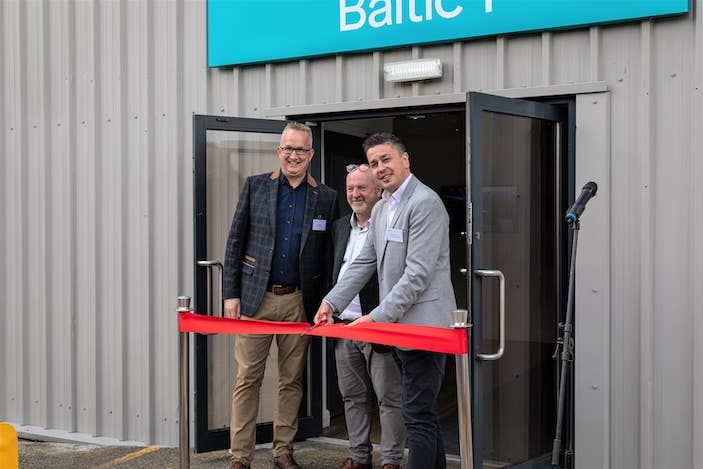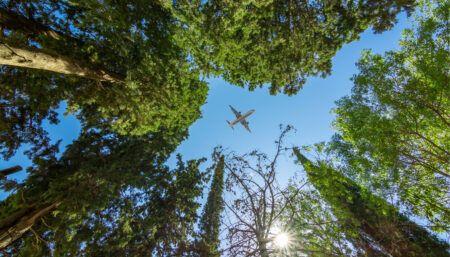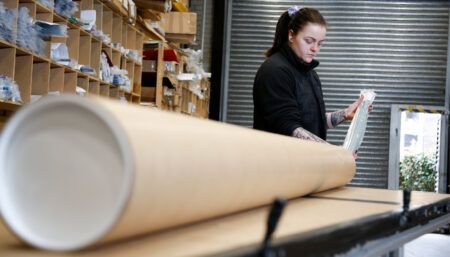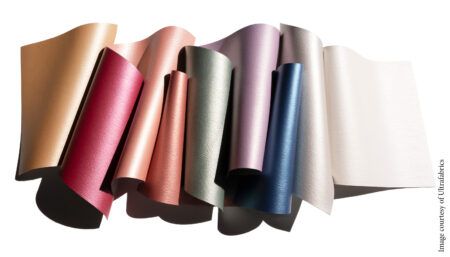Leather specialist Muirhead has opened a £14m (US$17.3m) Super Tannery, a project that has taken seven years to deliver. The company said the project will build on its sustainability standards and further enhance the production of its leather for the aviation and passenger transport markets.
Tanning is a crucial part of the leather production process, whereby the raw hides are treated in drums filled with water and tanning agents to transform them into Muirhead’s leather material.
The 14 new ‘super’ drums replace 30 conventional hide drums, enabling Muirhead to process greater batches while unlocking improvements in environmental performance. The company said the tannery’s hide processing technology brings about an 82% reduction in energy use and 42% reduction in water use compared with the group’s previous equipment.
“Since 2003, we have continuously invested in strategic initiatives designed to optimise and improve productivity, quality and sustainability,” said Nicholas Muirhead, CEO, Scottish Leather Group. “The new Super Tannery is the latest significant milestone on that journey, a state-of-the-art facility that builds on the considerable savings we have already made in reduced energy and water use, improving our efficiency, and futureproofing our production. This will provide our customers with further evidence of our position as the leader in the supply of the world’s lowest-carbon leather.”
“Over the last 20 years, we have pioneered and patented circular manufacturing processes that minimise waste to landfill and radically reduce our carbon footprint, with initiatives such as our Thermal Energy Plant and Ultrafiltration plant,” added Warren Bowden, head of innovation and sustainability, Scottish Leather Group. “The Super Tannery builds on these sector-leading actions, providing a step change in productivity and environmental savings. Our sustainability journey is continuous, and this new facility will play a vital role in enabling us to achieve zero-impact leather manufacturing. We are committed to net-zero for our own operations (Scope 1 and 2) by 2025 – 20 years ahead of Scotland’s overarching net-zero ambitions – and delivering zero waste to landfill by the same year, further fortifying our sustainability pledges.”
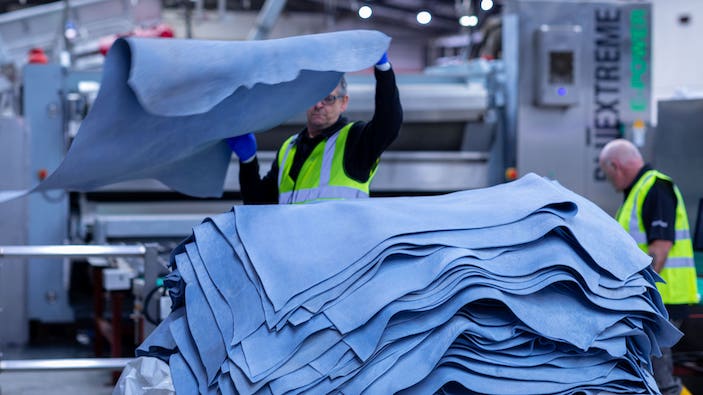
Despite the increase in efficiency, Scottish Leather Group will retain the same number of technicians on site, as skilled workers remain crucial to ensuring the company’s quality standards. In addition, and as part of the group’s commitment to complete circularity, the outgoing wooden drums from the tannery have been stripped down and repurposed.
The Super Tannery, which is now fully operational, will enhance Muirhead’s Life Cycle Analysis (LCA), which provides operators with an independently verified, quantifiable assessment of the leather’s overall environmental impact. Muirhead said that according to the ISO-accredited analysis, its 8kg CO2e/m2 LCA is currently the lowest in the world published for genuine leather.
To further underscore its commitment to sustainability, Scottish Leather Group’s newly released 2023 Environmental, Social and Governance (ESG) report details its commitments and progress around environmental performance, health and safety, compliance, and traceability. Among the highlights are a 90% reduction in the carbon intensity of its leather over the last 20 years, as well as 100% supply chain traceability.


